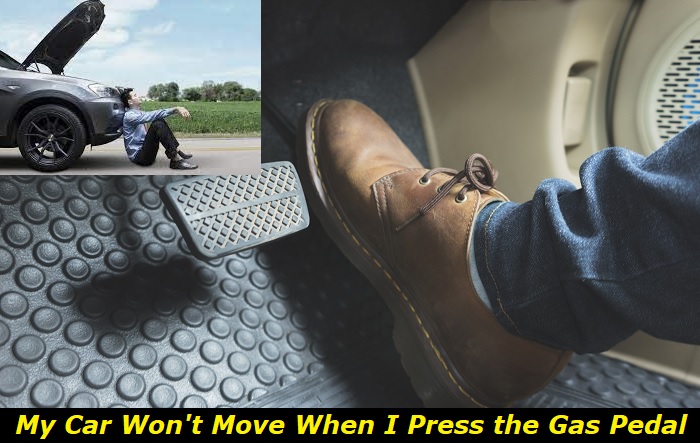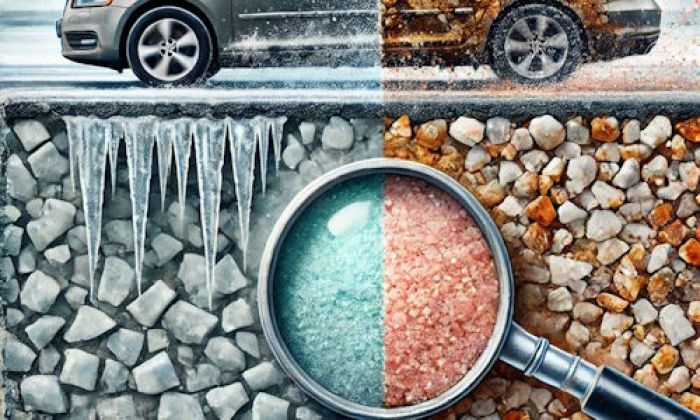For your vehicle to move when you press the gas pedal, power has to flow from the engine to the wheels. Transmission is the system that transfers this power. However, your vehicle must be engaged in gear for this process to be complete.
Engine power problems highlights
- Level of urgency:Medium
- DIY inspection:Possible but may be complicated
- DIY repair:Sometimes, possible
- Cost of repair:$200 - $650
- Can you drive?In most cases, yes
- Commonreasons:A largelist of reasons, including fuel and air supply, electronics, glitches, but not limited to those.
- Ways to fix:Use code scanner to locate the problem and solve it

Reasons You Press the Gas, but the Car Won't Move
This article unravels some possible reasons your Car will not move when you press the gas. We will also point out a few potential fixes for the issue.
1) Your Parking Brake Is Engaged
One of the reasons you are pressing on the gas pedal and the car will not move is that you forgot to disengage your parking brake. Although a car can move with the emergency parking brake still in place, this depends on how well you push the lever/ button. If the parking brake locks completely, your Car will not move an inch when you try to drive before disengaging the brake.
Another reason the parking brake locks your car is if the brakes are stuck. This can happen if the Car has been in the parking for a long time. It can also be because you used more energy than required when applying the brake.
At some point, you may need to call a professional mechanic to help you release the parking brake. This is true, especially for areas that use salt for de-icing or if your Car has been in parking for many days.
It seems a minor issue, but forgetting to disengage your parking brake could have you calling a tow truck for nothing. Always remember to check this before pushing the gas pedal.
2) Your Clutch Disc is Gone
If you drive a manual transmission vehicle, your clutch disc could be why your car will not move when you press the accelerator. After miles of driving and shifting gears, the clutch disc wears out. Moreover, if you do not replace it when it shows symptoms of failing, it will eventually give up in the middle of the road.
Some symptoms of a clutch disc needing replacing are slipping transmission and unresponsive vehicle. Replace the clutch disc at this point before it fails.
3) Problems with the ATF
If you drive an automatic transmission vehicle, your transmission fluid could be why you are stuck in the parking lot.
Clean ATF is the reason automatic vehicles run smoothly. In an automatic transmission, the transmission fluid works with the torque converter to transfer power from the engine to the wheels.
Over time, the ATF collects grime and dirt, and it can cause the engine to run rough. In the worst-case scenario, the vehicle will not respond at all. As a result, you will press the gas pedal, but the Car will not move an inch.
Dirty and old ATF could cause more problems than you can think of. It can even force you to rebuild or replace your entire transmission unit. If you shift and hear grinding noises, there is a severe problem with the gears in your automatic gearbox.
Damaged gears will not properly lock into place to engage gears. As a result, your vehicle will not move when you push the gas pedal. At this point, you may need to rebuild the transmission unit or replace it.
4) Your Throttle Body has an Issue
When you push the gas pedal, you manipulate a valve inside your vehicle's throttle body. The acceleration pedal opens a valve that allows more air to flow into the engine, creating more power for acceleration.
Although modern vehicles have electronic throttle bodies, older models use mechanical linkage between the gas pedal and the throttle body. If the valve does not open when you press the gas, there is no creation of power. As a result, your Car may not move from its current position. The engine may start smoothly, but the Car will not move if there is an issue with the throttle body.
5) ECU Malfunction
The rapid advancement in technology has led to significant improvements in auto manufacturing. Modern cars have control systems with sensors to help operate your vehicle. The Engine Control Unit or Module, depending on the Car you drive, executes commands from different sensors to aid in the proper running of your Car.
Like any other technology, this system can fail and cause trouble on the road. For example, if your computer system misinterprets door lock sensors to believe that there is an open door, your automatic parking brake will not disengage. As such, you will press the gas pedal, but the Car will not move.
Some cars have systems that cut engine power when you have not fastened your safety belt. If either the ECU or the seat belt sensor fails, your vehicle automatically cuts off engine power, and your car will not move.
6) A Leaking Gross Intake Manifold
Although it is a rare occurrence, the intake manifold may leak. When this happens, it causes the gas cylinders to draw in more air and affect the ratio of air to fuel entering the combustion chamber. One symptom of a leaking intake manifold is when the engine begins to run rough and slowly grows sluggish.
At this point, you should consult a mechanic to check the problem. As the leak grows, the issue worsens, eventually causing the car to stall. You will receive several warnings, including the "check engine" light. Moreover, the vehicle may not move when you press the gas pedal.
What Should I Do?
If you press the accelerator and the car does not move an inch, you can try a few things before engaging a professional mechanic. In assumption, you are experiencing a severe transmission failure. You could also be having trouble with your engine. The Engine Control Module in your vehicle could also be the reason for your problems.
Before doing anything else, try the following remedies.
- Ensure you fully turn your engine on. Some modern cars are so quiet that you can hardly tell when it is on or off.
- Next, ensure you disengage the parking brake before pressing the gas pedal. Driving a car with its parking brake is like pushing a wall, especially if you properly push the parking brake lever/ button.
- If these two do not work, switch your car off and try starting it in a different gear. You could be experiencing this problem because one of the gears in your transmission is not working correctly. However, even if this solves the problem, you should fix it before spreading it to other transmission areas.
- If the above remedies do not work, it is time to go technical and check areas such as transmission fluid, clutch discs, and other possible culprits. This is where you engage a professional mechanic to diagnose and fix the problem.
In Conclusion
We have identified six possible reasons your car will not move an inch when you press the gas pedal. We hope that this article adds value to your interaction with vehicles.
Whenever you have this issue, it could be because you forgot to disengage your parking brake. Additional reasons include a faulty ECM, gross intake manifold, or transmission problems such as a worn clutch disc or old ATF.
Additionally, we have shared a few points and possible remedies to help you get out of this situation in case the cause is minor. If you are lucky and the reasons are minor, these steps will help you out of the mud. If not, you may need the help of a professional mechanic.
Have you experienced this issue firsthand? Share your experience in the comment section, and subscribe for regular updates.
About the authors
The CarAraC research team is composed of seasoned auto mechanics and automotive industry professionals, including individuals with advanced degrees and certifications in their field. Our team members boast prestigious credentials, reflecting their extensive knowledge and skills. These qualifications include: IMI: Institute of the Motor Industry, ASE-Certified Master Automobile Technicians; Coventry University, Graduate of MA in Automotive Journalism; Politecnico di Torino, Italy, MS Automotive Engineering; Ss. Cyril and Methodius University in Skopje, Mechanical University in Skopje; TOC Automotive College; DHA Suffa University, Department of Mechanical Engineering






Add comment